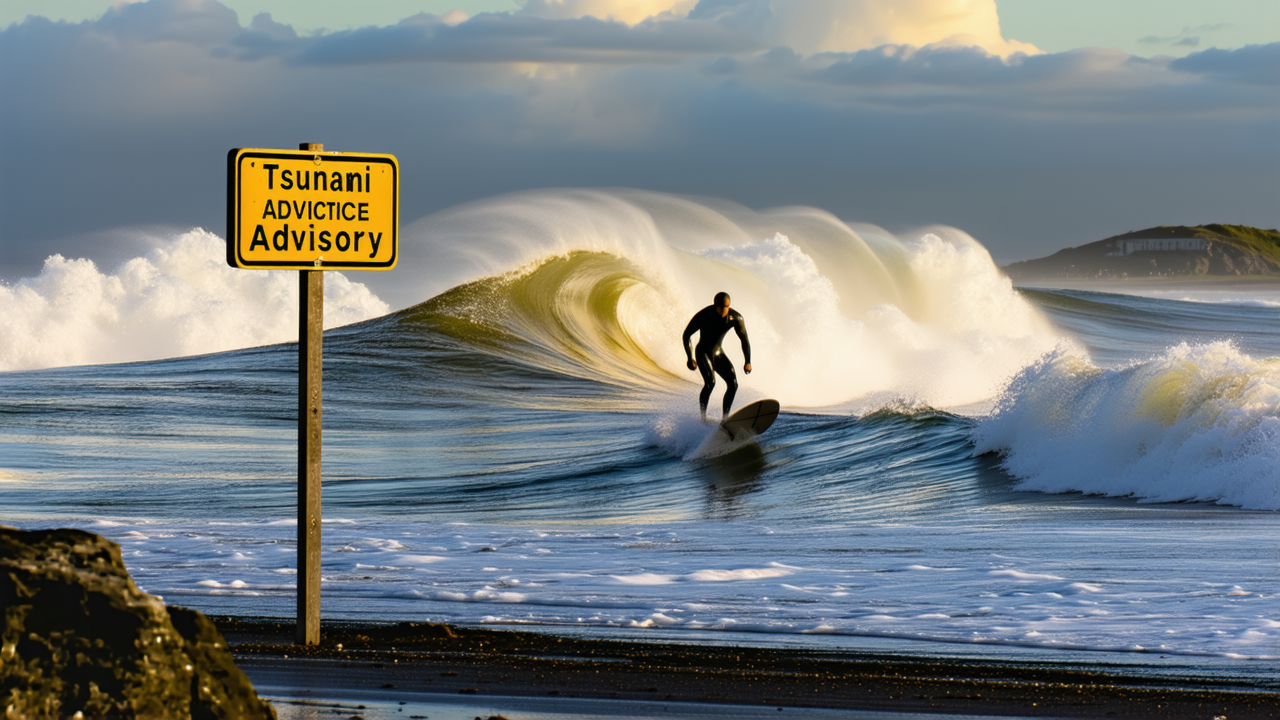Surfer Captured on Camera at Christchurch Beach During Tsunami Advisory
Surfer Captured on Camera at Christchurch Beach During Tsunami Advisory
Christchurch — A dramatic scene unfolded at Scarborough Beach in Christchurch on July 31, as a person was caught on camera riding the waves despite a national tsunami advisory issued earlier that day. The footage, which has since gone viral, has sparked both concern and curiosity among locals and emergency officials alike.
The tsunami warning was triggered by an 8.8 magnitude earthquake off the coast of Russia, prompting emergency alerts across New Zealand. The advisory urged residents to stay away from beaches, harbors, and other coastal areas due to the risk of strong currents and surges that could lead to injury or death.
Despite the clear and present danger, the video shows an individual surfing the waves at Scarborough Beach, seemingly unfazed by the warning. This behavior has raised questions about public awareness and the effectiveness of emergency alerts in such situations.
James Thompson, Canterbury’s Civil Defence Emergency Management controller, emphasized the importance of heeding official warnings. “We can still see strange and unusual currents, and we know the way the tsunami is behaving,” he said. “It’ll still impact parts of New Zealand, particularly the East Coast, for the next 12 hours, if not longer.”
Thompson urged residents to visit the National Emergency Management Agency (NEMA) website or their local council’s Civil Defence site for further guidance. He also noted that while the earthquake’s epicenter was far from New Zealand, the potential risks remained significant and should not be underestimated.
Meanwhile, several individuals were spotted walking along Takapuna Beach, another coastal area in Christchurch, despite the warnings. A young couple, who were later seen attending a Pilates class, admitted they were aware of the tsunami alert but felt it was too distant to pose a real threat. “We knew about the alert, but the earthquake was so far away, we weren’t worried,” one of them said.
Dr. Lauren Vinnell, a senior lecturer in emergency management at Massey University, acknowledged the challenge of balancing public awareness without causing complacency. “It’s a tough balance between not alerting too much and not alerting too little,” she explained. “Encouraging people to view these alerts as practice may help them be better prepared next time.”
Emergency Management Minister Mark Mitchell defended the decision to issue the alert, stating, “I make no apology for the fact that we’re taking the responsibility seriously. If we hadn’t done that and there’d been half a dozen people swept off the beach this morning when they were walking their dogs at 6:30 and had been drowned, then I’d be standing here being asked why we didn’t use our national alert system.”
As the day wore on, the Christchurch City Council issued additional warnings, advising residents to be particularly cautious in low-lying areas near the Avon Heathcote Estuary, the Waimakariri River mouth, and the heads of bays in Banks Peninsula. These areas are at higher risk of flooding and strong currents.
The incident has reignited discussions about the effectiveness of emergency alerts and the need for better public education on how to respond during natural disasters. While the surfer’s actions may have been a momentary lapse in judgment, they serve as a stark reminder of the importance of heeding official warnings.
As the day moved forward, emergency officials continued to monitor the situation closely. For now, the message remains clear: when a tsunami advisory is issued, it is not a time to take chances—it is a time to stay safe and follow the guidance of local authorities.
